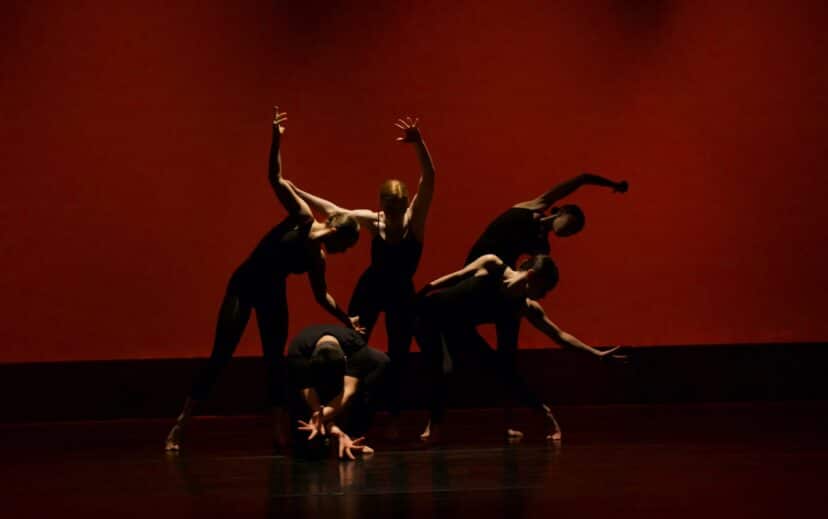Why and When to License Choreography
Licensing choreography has become more prevalent in recent years due to the emergence of YouTube, online streaming services, and social media, which make choreography more accessible and viewable to people worldwide. Theatregoers expect the shows they see to look like what they see on Broadway, which makes licensing choreography more appealing to Off-Broadway, regional, and community productions. Sometimes viewers watch videos of choreography and do not realize the choreography is a copyrightable element of the work for which they need a license to use. It is also possible that a dance captain or assistant choreographer on a Broadway or touring show will be hired for a local production, and elements of the original choreography seep into the new productions unintentionally.
The decision of whether or not to license preexisting choreography for a new production of a show depends on a myriad of factors. Of course, cost is one of the primary considerations. Whether it is less expensive to license preexisting choreography or hire a choreographer to create new choreography varies depending on the particular situation. Choreography from Broadway shows may not need to be licensed for touring productions of the show or film adaptations of the production if the choreographer retains the same directing control they had in the original production, which is usually the case. When choreography is iconic and an integral part of the show, it may be beneficial, or even necessary, to license it as part of the production in order to meet audience expectations.
Including choreography in the license of a production saves time and money on negotiating the fine details for each deal. Choreographers benefit both by being compensated for their work and by getting more exposure. Producers also benefits because they do not have to hire an outside choreographer. They can simply re-stage the choreography already provided, which will almost always conserve time and money.
Sometimes it is challenging to separate choreography from other aspects of the production, such as the set, lighting design, and costuming. Creative professionals involved in these other aspects may ask for a percentage of the gross profits of a show, leading to a higher cost for the licensee who now has to pay multiple individual royalties. Additionally, oftentimes directors and choreographers wish to send their own assistants to stage the choreography when it is part of the licensing package, and many times this is a required term in the license. The extra fee for these resident choreographers may also add too much to the cost in some instances, making it impractical for productions with smaller budgets.
Differences in cast sizes and talent levels, as well as stage and set differences may make it illogical to license choreography. In instances where shows are adapted for use in school productions, there may be issues with the nature of the choreography. If the style or moves utilized are not age appropriate, it may not make sense to license the choreography. Differently abled cast members may not have the capacity to perform the same choreography from an original production. Further, the ethnic make-up of the cast is important to consider when deciding the type of choreography to include, and even the particular show that is licensed, in order to avoid any cultural appropriation or misrepresentation.
If licensing an older production, it may be fitting to modernize the choreography to appeal to modern-day audiences, or it may make sense to keep it as close to the original as possible in order to present the show as it was intended. This is all dependent upon the goal of the production. Sometimes it is possible to license choreography and then choose to only use certain numbers rather than the full production package. Including some original numbers while creating other new numbers is a great way to honor the original production while adding to and revising other aspects of the production to keep theatre fresh and exciting for returning audience members.
Acquiring Rights to Choreography
So you’ve decided that obtaining a license is the right path for you, but how do you go about it? There are three primary ways: through (1) theatre rights licensing agencies, (2) individual choreographers and choreographers’ trusts, and (3) choreography licensing companies.
Theatre Rights Licensing Agencies
Theatre rights licensing agencies, such as Music Theatre International and Theatrical Rights Worldwide, streamline the licensing process and allow each production to determine whether choreography will be included in the licensing package for shows in their respective catalogues. Jerome Robbins’ West Side Story and Michael Bennett’s A Chorus Line are two examples of shows with iconic choreography. For years, signature choreography from these productions was required to be used when licensed, but more recently, newer productions of the shows are attempting to revitalize them by re-envisioning the choreography.
Individual Choreographers and Choreographers’ Trusts
When choreography is owned by a living choreographer or by a choreographer’s trust, it is best to apply for a license by sending a letter of request directly to the individual or the trust. Although there are exceptions, most choreographers want to see their work performed by other companies and in more productions so that they can become more recognized and their work becomes identifiable as their own, establishing their brand. Most choreographer trusts have websites where inquiries can be sent, such as the Jerome Robbins Trust, Merce Cunningham Trust, and The George Balanchine Trust, and have specific instructions for how to send licensing requests.
Choreography Licensing Companies
A newer option for licensing choreography is a choreography specific licensing company such as The Original Production, which provides an avenue for a company or production to pay a licensing fee in order to receive streaming videos of the choreography, step by step instruction and insight from Broadway choreographers to provide the tools to execute each number, and the licensing and performance rights for the choreography.
Conclusion
Licensing choreography facilitates a balance of protecting artists’ creative pieces while also providing ways for choreographers to receive more exposure and encouraging new productions that are inspired by and built from the great works of the past. We are here to assist with the legal issues that arise when licensing your choreography to a production or when seeking to acquire the rights to choreography.
Photo by Samantha Weisburg on Unsplash




